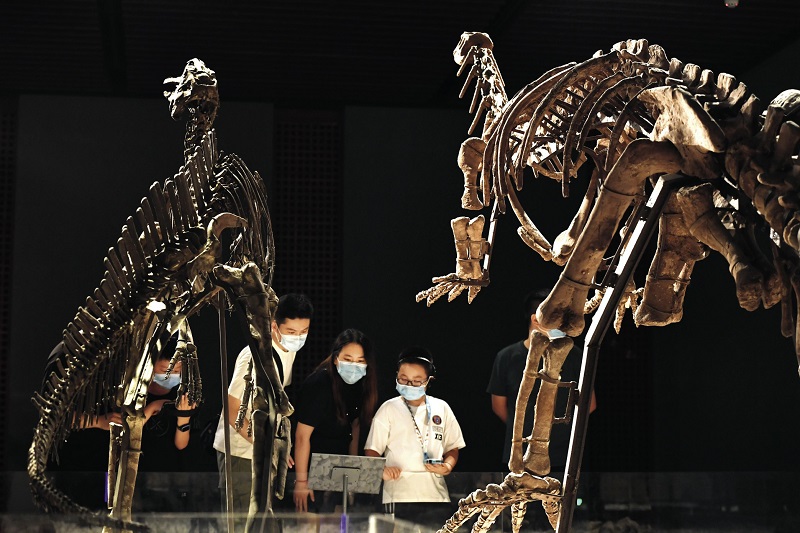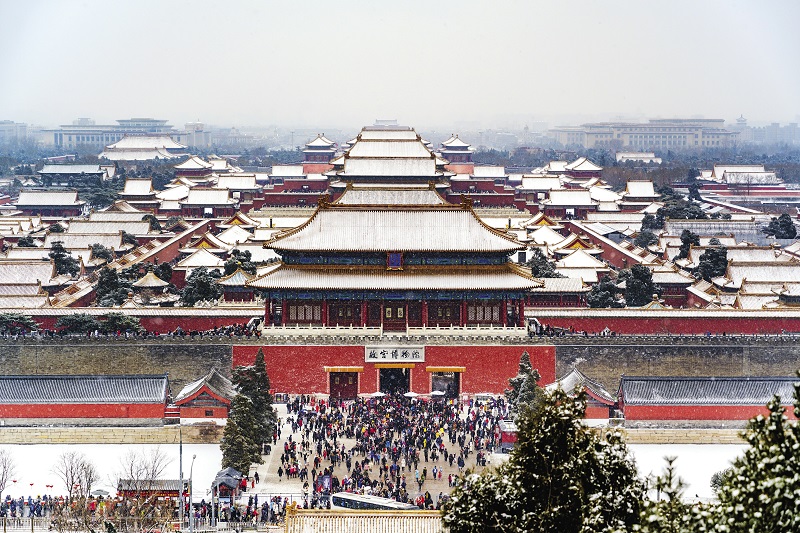The opening of the Museum of Art Pudong in Shanghai last July came as part of the country’s efforts to boost development of its museums, thus promoting cultural exchanges and facilitating the spread of traditional Chinese culture. A guideline jointly issued by nine departments including the National Cultural Heritage Administration in May indicated China’s resolve and plan to reform its museums, in order to build it into a world museum powerhouse by 2035. The country has a dazzling array of historical and cultural heritages that makes it the oldest unbroken civilization in the world. Being historically aware and interacting with other cultures and civilizations is one of the fundamental pillars to promote international dialogue, which is vital in our times.

Visitors at the Nanjing Museum on September 11. Nowadays, museums have become the must-visit places for Chinese children during their holidays.
Transformation Underway
There are figures that help put the reach of this museum reform drive into perspective. On May 1, the Ceramics Gallery of China’s Palace Museum reopened with an exhibition spanning nearly 8,000 years, with multi-dimensional displays and interaction available thanks to new technologies. The enclosure is designed to contain 17 thematic exhibitions and is part of a larger museum network, in a country that in January of this year had 5,788 officially recognized museums.
According to the new guideline, to improve its museum status, China will upgrad 10-15 museums into world-class ones with distinct Chinese characteristics and styles, while the growth of medium-sized and small museums will be supported. The initiative is intended to open spaces for participation so that the population feels more linked to the process, which entails, among other things, encouraging individuals to donate collectibles. It should be remembered that in recent decades a cosmopolitan and well-traveled intellectual and business class has grown in China, and been able to acquire a significant number of Chinese historical relics scattered around the world. Thus, predictably, the new museum reform measures will consider the inclusion of private museums, which also expect a boost, according to Zhang Yiwu, professor of cultural studies at Peking University. Zhang foresees an increase in temporary exhibitions that unfolds greater creativity, possibly supported by 5G and eventually 6G technology.
This way, the example of the Museum of Art Pudong – designed by the studio of the renowned French architect Jean Nouvel – which aspires to become a cultural benchmark for Shanghai at an international level, is perfectly aligned with the general Chinese plan.
Museum Heritage Facilitates Dialogue
The current museum reform plan is preceded by the commemoration of the 600 years of the Forbidden City (also known as the Palace Museum) in late 2020, which covers an area of 720,000 square meters with 9,999 rooms. Built between 1406 and 1420, the site represents the culmination of traditional Chinese architecture and is also the largest palace complex in the world. Therefore, the legacy of the last two dynasties, the Ming (1368-1644) and the Qing (1644-1911), is reflected there, along with the development of the museum since its institution in 1925. The commemoration was celebrated in the exhibition entitled “Everlasting Splendor: Six Centuries at the Forbidden City,” focusing on traditional construction engineering, based on various principles of traditional Chinese philosophy and landscape elements during the four seasons of the year. It should be remembered that the palace complex had a strong influence on cultural and architectural development in the rest of East Asia.
Among the European intellectuals who have best captured Chinese civilization are those who have visited this palace complex. Topping the list are the Italian Matteo Ricci and the Spanish Diego de Pantoja, who lived in China in the 16th and 17th centuries. Pantoja was remembered in both Spain and China when they celebrated the 45th anniversary of their bilateral diplomatic relations in 2018, which coincided with the 400 years of his demise. On that occasion, the Chinese ambassador to Madrid Lü Fan highlighted, “In his extensive study and research of our language and culture, Pantoja knew how to contact the people and integrated very well into the Chinese society of the time. His example leads us all to reflect on the important meaning of respect for the diversity of civilizations and on mutual learning between them.”
Both intellectuals and many others of the time saw in China a civilization that they could dialogue with and learn a lot from. In this regard, it is important to mention the recent joint investigation between the Palace Museum of China and Durham University, whose 2019 results suggest that the Maritime Silk Road reached Western Europe about half a millennium earlier than estimated in the last centuries. Chinese ceramic shards found in various locations in Spain such as Zaragoza, Almería, Valencia, among others, date back to the Tang and Song dynasties, thus demonstrating the existence of various commercial and cultural links between China and Western Europe.

The Palace Museum, also known as the Forbidden City, is clad in a fluffy layer of snow.
Testimonies Steeped in History
Museums are also present in the minds of ordinary people who see the importance of the past. When I was studying at Peking University in the 1980s, I visited the halls of the National Museum of China adjacent to the Tian’anmen Square. Among the visitors, a teacher who happened to be a savant about Chinese history took the time to accompany me and explain how he understood China’s heritage. A month after our meeting, he mailed me a set of historical almanacs, which he hoped would help improve mutual understanding between us. A year later, while staying in the Confucius family mansion in Qufu City, Shandong Province, a specialist in the history of Chinese gastronomy from Harbin University, Heilongjiang Province, also took the time to explain the evolution of some culinary delights to me, and he even organized a bike tour around the outskirts of the city. Then, at the end of the last decade, I had the honor of dining at the legendary Diaoyutai State Guesthouse in Beijing, for a publishing project. I was able to admire exquisite calligraphy and taste multi-regional dishes rooted in tradition and prepared with innovation. These occasions were, in short, about art and culture, dedication and learning, and the very expression of Chinese history.
AUGUSTO SOTO is director of the Dialogue with China Project.